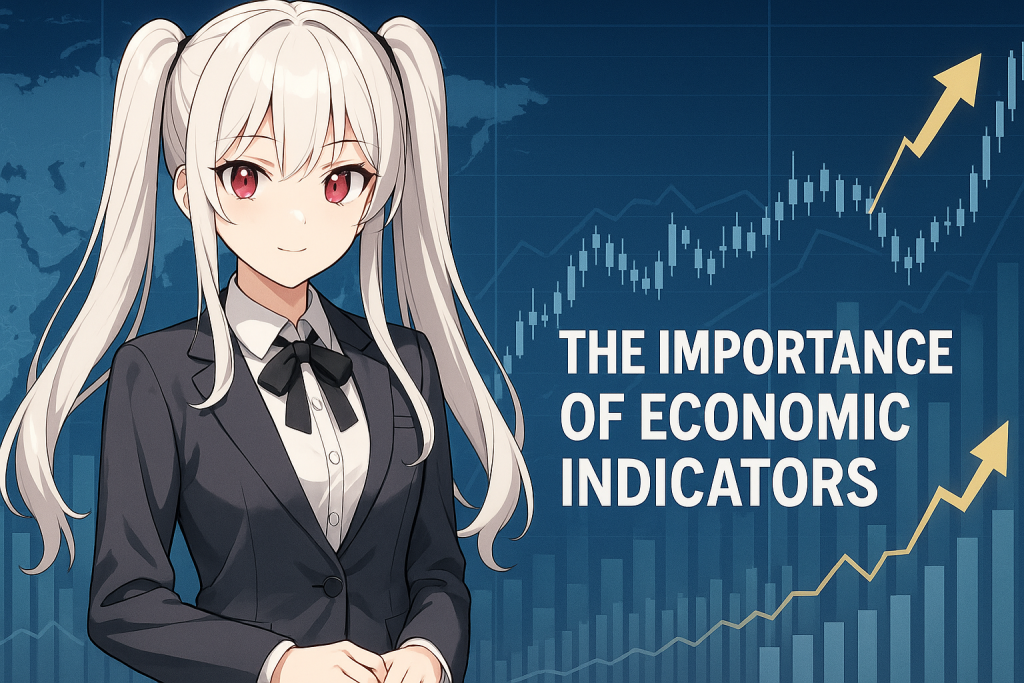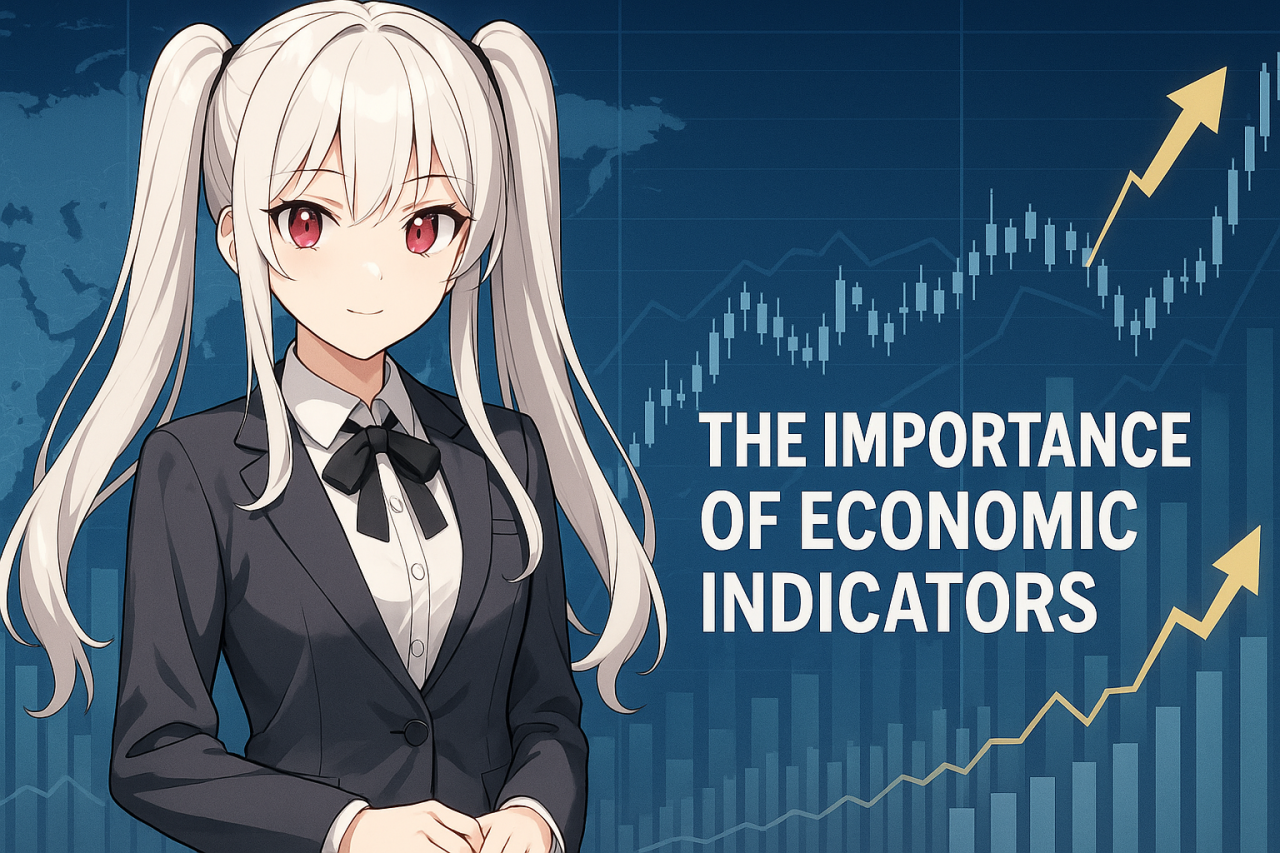What Are Economic Indicators? Their Role in FX Trading
Definition and Importance of Economic Indicators
Economic indicators, in a nutshell, are specific numerical representations of a country’s economic situation. These numbers are essential for understanding the overall health and growth direction of the economy, reflecting conditions across a wide range of sectors. For example, Gross Domestic Product (GDP) is one of the most important indicators that shows the scale of a country’s economic activity and plays a central role in measuring economic growth.
Employment statistics indicate the state of the labor market, including unemployment rates and non‑farm payrolls. These indicators influence consumer spending and corporate investment appetite, thereby shaping overall economic trends. The Consumer Price Index (CPI) reflects price changes for goods and services purchased by consumers and is a key gauge of inflation. Inflation rates heavily influence central bank monetary policy, and through interest rate movements, they also affect exchange rates.
These indicators serve not only as critical inputs for governments and central banks when setting monetary policy but also guide corporate investment plans and individual consumer decisions. In FX trading, indicator releases can significantly sway exchange rates, so traders must constantly monitor them and incorporate them into their strategies. Understanding and properly leveraging economic indicators can increase the likelihood of success in FX trading.
The Role of Economic Indicators in FX Trading
In FX trading, economic indicators act like a compass. Exchange rates fluctuate due to various factors, but among them, economic indicators provide key clues for predicting those movements. When a country’s economy is strong, its currency tends to be bought; conversely, if the economy weakens, the currency tends to be sold.
For example, if U.S. employment data comes in well above expectations, the dollar is typically bought. This is because it is seen as evidence of a strong U.S. economy, raising the likelihood that the Federal Reserve will hike rates. Higher rates make the currency more attractive, encouraging capital inflows from abroad, which pushes the exchange rate up.
FX traders gauge market consensus (forecast values) before an indicator is released and then trade based on expected rate movements after the release. If the indicator beats expectations, they hold long positions; if it falls short, they hold shorts to chase profit. However, immediately after an indicator is released, market reactions can be exaggerated, causing large rate swings, so caution is needed. Thorough risk management and calm decision-making are essential.
How to Use the Economic Indicator Calendar
The economic indicator calendar is an essential tool for FX traders. It lists the release schedules of major indicators from around the world, allowing you to check dates, types, forecasts, and past results. Major FX firms such as GMO Click Securities and Gaika Dot Com provide the calendar on their platforms for free.
When using the calendar, first focus on indicators relevant to the currency you trade. For example, if trading USD/JPY, U.S. employment data, GDP, CPI, etc., are important. Next, check each indicator’s release time and devise a strategy. Since rates can swing sharply right after a release, set risk controls (e.g., stop‑loss orders) in advance.
Also, the calendar shows past results, enabling historical data analysis. By examining how rates moved when a particular indicator was released, you can gain clues to forecast future rate changes. Effectively using the calendar and refining your strategy can boost your FX trading success rate.
経済指標カレンダー。FX・外国為替ならGMO外貨【公式サイト】。GMOインターネットグループのFXだから、魅力のスプレッ…
Key Economic Indicators and Their Impact on FX
U.S. Employment Statistics
U.S. employment statistics are one of the most closely watched economic indicators in the FX market. They are released on the first Friday of each month and include the unemployment rate, nonfarm payrolls, and average hourly earnings. In particular, changes in nonfarm payrolls are considered a key indicator for assessing the U.S. economic condition, and the market pays close attention to them.
When nonfarm payrolls exceed expectations, the U.S. economy is judged to be strong, and the dollar tends to be bought. This indicates that companies are actively increasing employment, implying higher consumer spending and corporate investment enthusiasm. Conversely, if nonfarm payrolls fall short of expectations, the U.S. economy is seen as slowing, and the dollar tends to be sold.
Immediately after the employment data release, exchange rates can fluctuate sharply, offering opportunities for large profits in a short time but also posing significant loss risks. Therefore, trading around the employment data release requires caution. Setting risk management in advance and trading based on calm judgment is essential.

Gross Domestic Product (GDP)
Gross Domestic Product (GDP) is an indicator that shows the total value of goods and services produced domestically over a given period. GDP is one of the most important measures for assessing a country’s economic size and is used to gauge economic growth rates. It is typically released quarterly on an annualized basis.
If GDP figures exceed expectations, the country’s economy is judged to be strong, and its currency tends to be bought. This is because a virtuous cycle of increased production activity, higher employment, and greater consumer spending emerges. Conversely, if GDP falls short of expectations, the economy is seen as slowing, and the currency tends to be sold.
GDP is one of the indicators that can significantly affect the FX market, and exchange rates may swing sharply at its release. In particular, GDP releases from major economies can influence global economic trends, making them highly scrutinized. Before a GDP release, understanding market consensus and predicting post-release rate movements are crucial strategies for profiting in FX trading.
Consumer Price Index (CPI)
The Consumer Price Index (CPI) is an indicator that reflects price changes for goods and services purchased by consumers and is crucial for measuring inflation. Rising inflation generally signals a decline in currency value and has a significant impact on central bank monetary policy. CPI is released monthly and includes price changes for various items such as food, energy, housing, and more.
If CPI exceeds expectations, inflation is judged to be rising, increasing the likelihood that the central bank will raise interest rates. Higher rates make the country’s currency more attractive, encouraging capital inflows from abroad and driving up exchange rates. Conversely, if CPI falls short of expectations, inflation is seen as falling, raising the probability that the central bank will lower rates. Lower rates reduce the currency’s appeal, making capital outflows more likely and causing exchange rates to decline.
CPI is an important indicator for understanding inflation trends and predicting central bank monetary policy in the FX market. Before a CPI release, grasping market consensus and forecasting post-release rate movements are key strategies for earning profits in FX trading.
Points to Consider During Economic Indicator Releases
Sharp Movements Immediately After the Release
Immediately after an economic indicator is released, market reactions are often excessive, and exchange rates can fluctuate sharply. This is because many traders trade simultaneously, leading to reduced liquidity, widened spreads, and diminished execution quality. In particular, if the results differ significantly from expectations, volatility can become very high, increasing the risk of substantial losses in a short period.
Therefore, trading immediately after an economic indicator release should be avoided or managed with strict risk controls. Set stop‑loss orders in advance to limit losses, keep leverage low, and avoid overtrading. Observe market trends calmly and refrain from emotional trading. Trading during indicator releases carries high risk, so careful judgment is required.
Fake News and the Veracity of Information
In recent years, fake news and misinformation have increasingly spread through social media and the internet. Information about economic indicators is no exception; trading based on incorrect information can lead to significant losses. In particular, intentionally false information may circulate before and after indicator releases, so caution is needed.
It is important to verify the source of information and gather data from reliable outlets. Refer to official releases from government agencies, central banks, major financial institutions, and reputable news media. Additionally, collecting information from multiple sources and comparing them helps discern truth from falsehood. Do not take information from anonymous sources such as social media or forums at face value; always verify it.
In FX trading, making calm decisions based on accurate information is key to success. Avoid being misled by fake news or misinformation; gather data from trustworthy sources and rigorously manage risk.
Leveraging Information Tools Offered by FX Companies
Many FX firms provide a range of information tools for traders. Using these tools allows efficient collection of economic indicator data and helps formulate trading strategies. For example, an economic calendar is a tool to check the release schedule of major indicators, listing dates, forecasts, and past results.
News distribution services deliver the latest news and market trends related to economic indicators in real time. Analysis tools enable historical data analysis and technical analysis, aiding chart and trend analysis. Major FX firms such as GMO Click Securities and Forex.com offer abundant information tools that can be used for free.
Actively using these tools can efficiently gather economic indicator information and refine trading strategies. However, tools are only reference material; final trading decisions must be made at one’s own responsibility. Do not take tools at face value; trade based on your own analysis and judgment.
Summary: Understand Economic Indicators to Gain an Edge in FX Trading
Economic indicators serve as crucial decision‑making tools that act like a compass in FX trading. By understanding economic indicators that quantify each country’s economic conditions and utilizing an economic indicator calendar, you can predict currency rate fluctuations and devise trading strategies. Key indicators include U.S. employment data, GDP, CPI, etc., and these indicators have a significant impact on the FX market.
During economic indicator releases, currency rates can fluctuate sharply, so thorough risk management is essential. Set stop‑loss orders in advance and keep leverage low to trade cautiously. Also, avoid being misled by fake news or incorrect information; it is important to gather data from reliable sources. Actively use the information tools provided by FX brokers to efficiently collect information about economic indicators.
For FX beginners, we recommend first understanding the meaning of key economic indicators and practicing with demo trading. By understanding and appropriately using economic indicators, you can advance your FX trading advantageously. Since FX trading involves risk, conduct trades based on careful judgment and at your own responsibility.
Reference Links
本記事ではFXで注目される経済指標を解説します。FX取引において、相場の見通しを立てることは非常に重要であり、あらゆる角…














